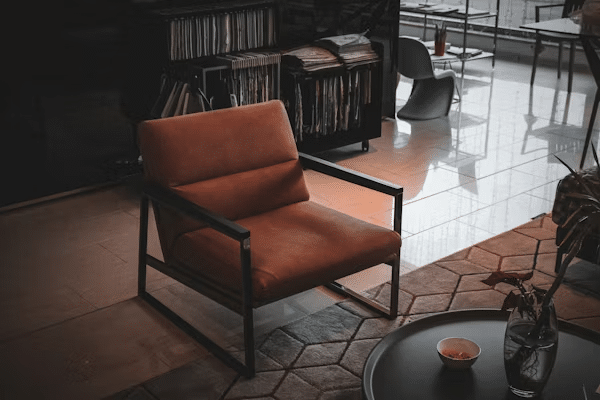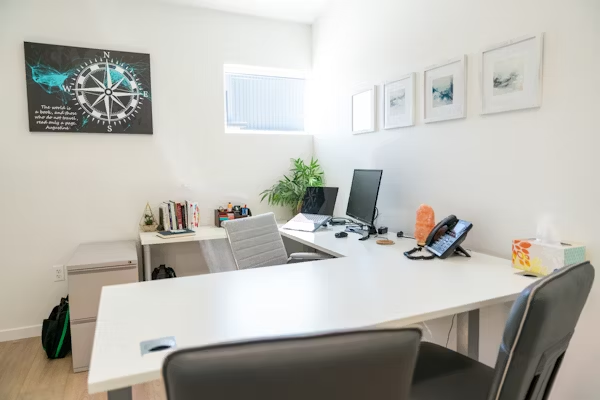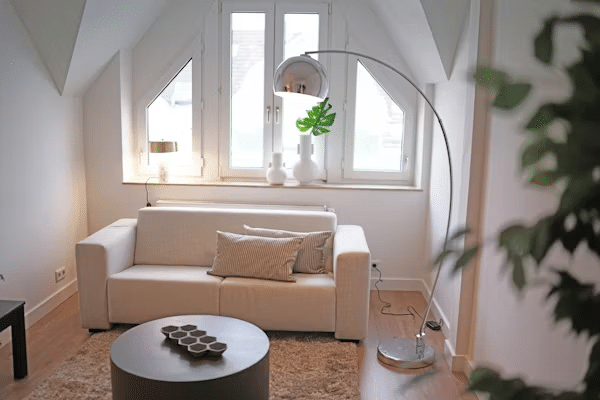There’s something uniquely exciting about the opportunity to reimagine your living space whether you’re settling into a new home, refreshing your current environment, or finally tackling that long-overdue renovation.
The spaces we inhabit profoundly impact our daily lives, influencing everything from our productivity and creativity to our relaxation and overall wellbeing. Yet many people approach home design reactively, making quick decisions without considering how each element contributes to their lifestyle.
Creating a truly functional and comfortable home requires thoughtful planning across multiple dimensions. It’s not just about aesthetics, though visual appeal certainly matters. The best living spaces seamlessly blend comfort, functionality, and personal style while adapting to your unique needs and routines.
Whether you’re starting from scratch or gradually improving individual areas, understanding the fundamentals of space planning, furniture selection, and intentional design will help you create an environment where you genuinely love spending time.
The Foundation: Planning Your Space Transformation
Before diving into furniture catalogs or paint swatches, take time to genuinely assess how you use your home. Walk through each room and observe your daily patterns. Where do you naturally gravitate when you need to relax? Which areas feel cramped or underutilized? What activities do you wish you had better space for?
This reflection phase is invaluable because it grounds your decisions in reality rather than aspiration. You might discover that your formal dining room rarely hosts dinners but would make an excellent home library. Or perhaps that spare bedroom could serve better as a multipurpose creative space rather than sitting empty most of the year.
Consider creating a simple priority list for each space. What’s the primary function? What’s secondary? Understanding these hierarchies helps when you’re making trade-offs during the design process. A living room might primarily serve as a relaxation zone but secondarily need to accommodate occasional guests or provide a play area for children. These dual purposes shape everything from furniture selection to layout decisions.
Making the Transition: Setting Up for Success
One of the most significant opportunities to reimagine your living environment comes during relocation. Whether you’re moving across town or across the country, the transition period offers a unique chance to reset and reconsider your living arrangements with fresh eyes. However, the logistics of moving can feel overwhelming without proper planning and support.
Professional home removalists can transform what might otherwise be a chaotic experience into a smooth transition. Beyond the obvious benefit of having experienced professionals handle your belongings, quality moving services provide peace of mind during an already stressful time. They understand proper packing techniques for different items, from delicate glassware to heavy furniture, and have the equipment to protect your possessions throughout the journey.
What many people don’t realize is that professional movers also save you time that’s better invested elsewhere. Instead of spending weeks coordinating vehicle rentals, gathering packing supplies, and recruiting reluctant friends, you can focus on the forward-looking aspects of your move: planning your new space layout, updating addresses, and mentally preparing for the transition.
The physical exhaustion of DIY moving often delays unpacking and settling in, sometimes by weeks or months. Professional assistance means you can start enjoying your new environment much sooner.
When selecting moving services, look beyond price alone. Consider their experience with homes similar to yours, their insurance coverage, and their willingness to accommodate special requirements. Some movers offer packing services, which can be invaluable for busy professionals or anyone with limited mobility.
Others provide storage solutions if your move-in and move-out dates don’t align perfectly. Think of professional movers as partners in your transition rather than just labor; the right team will work with you to ensure everything proceeds according to your timeline and specifications.

Designing Comfort: Selecting Furniture That Supports Your Lifestyle
Once you’ve established your space and settled in, the next critical decision involves selecting furniture that genuinely serves your daily life.
Too often, people choose pieces based purely on appearance, only to discover they’re uncomfortable, impractical, or poorly suited to their actual needs. The most successful furniture selections balance aesthetics with functionality and long-term comfort.
Your seating choices particularly deserve careful consideration, as these pieces directly impact your physical wellbeing and relaxation capabilities. In living rooms and media spaces especially, the right seating can mean the difference between a room you avoid and one where you naturally spend your downtime.
For many households, particularly those with family members who value maximum comfort or individuals managing mobility concerns, electric recliner chairs Brisbane residents can explore offer compelling advantages over traditional seating.
Modern recliners have evolved far beyond the bulky, leather-covered stereotypes of previous decades. Today’s options come in diverse styles, from sleek contemporary designs to classic overstuffed comfort, with fabrics ranging from easy-clean microfiber to luxurious velvet.
The electric mechanism in quality recliners provides smooth, effortless positioning that manual levers simply can’t match. This becomes particularly important for anyone with back problems, arthritis, or limited strength.
The ability to adjust your position precisely, finding that perfect angle for reading, watching television, or napping transforms how you experience relaxation at home. Many models now include additional features like lumbar support, heat therapy, and massage functions, essentially providing therapeutic benefits while you unwind.
Beyond the functional benefits, well-chosen recliners serve as anchor pieces that define your living space’s character. A thoughtfully positioned recliner creates a dedicated relaxation zone, signaling to both residents and guests that this is a space prioritizing comfort and unwinding. When shopping for recliners, test them thoroughly. Sit for at least 10-15 minutes in various positions.
Consider the chair’s footprint in a reclined position; you’ll need adequate clearance from walls and other furniture. And don’t overlook the importance of quality construction; a well-made recliner represents an investment that will serve you daily for years.

Optimizing Functionality: Creating Effective Workspaces at Home
The dramatic increase in remote work over recent years has transformed many homes, with spare bedrooms, dining room corners, and even closets being converted into functional office spaces. Yet working from home successfully requires more than just claiming any available horizontal surface for your laptop. The right workspace setup significantly impacts your productivity, focus, and even your physical health.
Central to any effective home office is your desk, the foundation of your workspace where you’ll spend countless hours. The desk selection process deserves genuine attention because this piece of furniture affects everything from your storage capabilities to your posture and workflow efficiency. While desk shopping might seem straightforward, the variety of available options can actually complicate the decision.
One fundamental consideration that often puzzles buyers is the debate around desk with shelves vs desk with drawers. Each configuration offers distinct advantages depending on your work style, storage needs, and space constraints. Understanding these differences helps you select a desk that genuinely serves your requirements rather than creating frustration.
Desks featuring shelving units typically provide open, visible storage that keeps frequently used items within easy reach. This design works particularly well for creative professionals who benefit from seeing their resources whether that’s design books, project samples, or inspiration materials. The vertical storage maximizes limited floor space while keeping supplies accessible. However, open shelving requires more attention to organization, as clutter becomes immediately visible. These desks also tend to have lighter visual profiles, making them excellent choices for smaller rooms where you want to avoid a heavy, enclosed feeling.
Drawer-based desks, conversely, offer concealed storage that maintains a cleaner, more minimalist appearance. If your work involves numerous small items, documents, or supplies that need protection from dust, drawers provide practical solutions. They’re ideal for people who value a clear workspace at the end of each day, as everything can be neatly tucked away. The trade-off involves slightly reduced accessibility: retrieving items from drawers requires an extra step compared to grabbing something from an open shelf. Drawer desks also typically have a more substantial presence, which works beautifully in larger rooms but might overwhelm compact spaces.
Many people discover that a hybrid approach serves them best: a primary desk with drawers for essential supplies and documents, complemented by a separate bookshelf or floating wall shelves for reference materials and decorative items. This combination provides both the organization of drawers and the accessibility of open shelving.
Beyond the storage configuration, consider your desk’s size relative to your actual work requirements. Many people underestimate the surface area they need, then find themselves constantly shuffling items around or working in cramped conditions. If you use multiple monitors, drawing tablets, or regularly spread out documents, prioritize width. For those working with physical materials or frequent video calls requiring good framing, depth becomes equally important.

The Details That Elevate: Finishing Touches and Personalization
Once you’ve addressed the major furniture pieces and functional requirements, the finishing touches transform your house into a home that truly reflects your personality. These details from lighting selections to decorative accessories might seem minor individually, but collectively they create atmosphere and character that makes spaces feel uniquely yours.
Lighting deserves special attention as it dramatically affects both functionality and mood. Most rooms benefit from layered lighting: ambient lighting for general illumination, task lighting for specific activities, and accent lighting to highlight architectural features or artwork. Don’t rely solely on harsh overhead fixtures. Table lamps, floor lamps, and wall sconces create warmth and flexibility, allowing you to adjust your lighting to match different activities and times of day.
Textiles add comfort and softness while providing opportunities to introduce color, pattern, and texture. Throw pillows, blankets, area rugs, and window treatments all contribute to making spaces feel welcoming and complete. These elements also offer the advantage of being relatively inexpensive to change, allowing you to refresh your look seasonally or as your taste evolves without major investment.
Personal touches photographs, artwork, collections, plants inject personality and tell your story. However, curation matters. A few meaningful pieces thoughtfully displayed create more impact than every surface crowded with objects. Consider rotating displays seasonally or based on your mood, keeping some items in storage to bring out when they’ll feel fresh and exciting again.
Don’t underestimate the power of organization systems in maintaining the comfortable, functional environment you’ve created. Beautiful spaces quickly deteriorate when clutter accumulates. Invest in attractive storage solutions baskets, decorative boxes, stylish shelving that make maintaining order easier and more appealing. When everything has a designated home, keeping spaces tidy becomes a simple habit rather than an overwhelming chore.

Maintaining Your Sanctuary: Long-term Care and Evolution
Creating your ideal living environment isn’t a one-time project but an ongoing relationship with your space. Homes evolve as our lives change, families grow, careers shift, hobbies develop, and our preferences naturally transform over time. Building flexibility into your design choices allows your space to adapt rather than requiring complete overhauls.
Regular maintenance preserves both the appearance and functionality of your investment. Establish simple routines for furniture care vacuuming upholstery, conditioning leather, tightening loose hardware, and addressing minor issues before they become major problems. Most furniture damage results from neglect rather than use, so a little preventive attention extends the life of your pieces significantly.
Be willing to reassess and adjust. That arrangement that worked perfectly two years ago might no longer serve your current needs.
Don’t let attachment to past decisions prevent you from making changes that would improve your daily experience. Moving furniture, repurposing rooms, or replacing pieces that no longer function well demonstrates wisdom, not wastefulness.
Consider the environmental impact of your choices by selecting quality over quantity. Well-made furniture that lasts decades ultimately creates less waste than repeatedly replacing cheap pieces every few years. When you do need to part with items, explore donation, resale, or recycling options rather than defaulting to disposal.
Creating Your Personal Haven
Ultimately, the goal of thoughtful home design extends beyond creating magazine-worthy spaces. The best homes support their inhabitants’ wellbeing, facilitate their daily activities, and provide genuine comfort and joy. Whether you’re embarking on a complete home transformation or simply improving individual areas, approaching the process with intention and consideration yields results that enhance your life for years to come.
Remember that perfection isn’t the objective. Homes should feel lived-in and welcoming, not like museum displays. Allow your space to reflect your real life the hobbies you actually pursue, the way you genuinely relax, the people you love spending time with. Authenticity creates more satisfying environments than any amount of trend-following ever could.
Take your time with major decisions, but don’t let perfectionism paralyze you. Sometimes you need to live with a space before understanding exactly what it needs. Be willing to experiment, make mistakes, and learn what truly works for you. Your ideal home environment develops through this process of discovery and refinement, gradually becoming a space that supports and celebrates the life you want to live.

